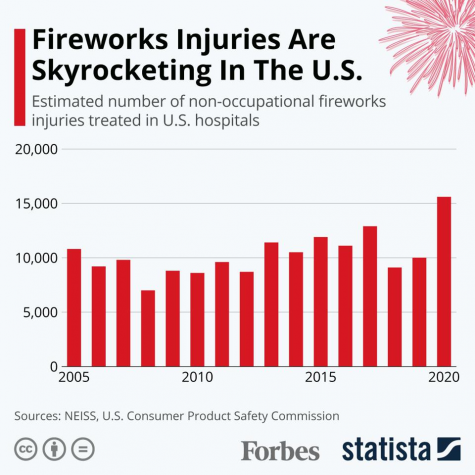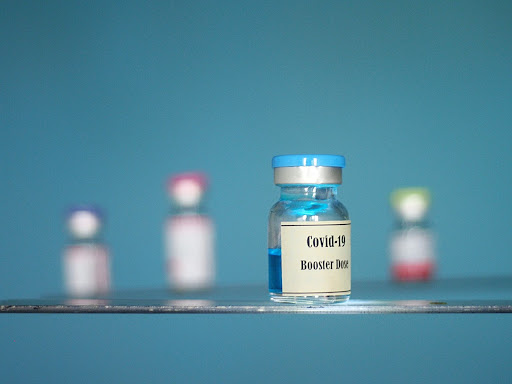Every year, countless people gather together on July fourth to celebrate American independence with parties, cookouts, and spectacular firework displays. However, these displays are notorious for causing injuries and deaths nationwide as well as negatively impacting the environment, pets, and more.
One of the most significant losses this year was Mattis Kivlenieks, an NHL goaltender of the Columbus Blue Jackets who died in a fireworks-related incident while at his coach’s house.
“We are shocked and saddened by the loss of Matiss Kivlenieks,” said Columbus Blue Jackets President in a statement to CNN. “Kivi was an outstanding young man who greeted every day and everyone with a smile and the impact he had during his four years with our organization will not be forgotten.”
According to the New York Times, deaths by fireworks or by fireworks-related injuries have been steadily increasing since 2008.

A recent statistic from Forbes revealed that an estimated 15,600 people required emergency room treatment in U.S. hospitals due to accidents involving fireworks in 2020, an increase from approximately 10,000 in 2019.
Captain Eric Prosswimmer of the Jacksonville Fire and Rescue Department said that the department responds to many fireworks-related calls every year, especially around Independence Day and New Year’s.
“There are clearly issues we see with hand injuries and other burns resulting from firework use,” said Captain Prosswimmer.
Additionally, firework displays continue to cause controversy every year due to their impact on our nation’s carbon footprint.
According to GrrlScientist, an evolutionary ecologist and writer for Forbes, when a firework is lit, the heavy metals inside it undergo a physical change while the metal salts and explosives undergo a chemical change combusting when combining with oxygen. This chemical reaction then produces smoke and gases like carbon dioxide, carbon monoxide, and nitrogen, some of the primary greenhouse gases responsible for climate change.
To make matter worse, these metal particles do not get incinerated by the blast and instead convert into poisonous aerosols which when inhaled or ingested, can cause a variety of side effects including vomiting, diarrhea, asthma attacks, kidney disease, cardiotoxic effects, and even a variety of cancers.
As well as affecting the environment, fireworks are often criticized for their effects on household pets who are frightened by the loud blasts. Many animals like dogs and cats have sensitive ears and the loud firework explosions contribute to anxiety and even hearing loss.
Fortunately, according to NPR, there are many things that pet owners can do to comfort their pets including keeping them indoors, playing soft music or white noise, and creating safe spaces for them to hide.
Despite the multitude of concerns revolving around firework displays, because they are so beloved by the majority of the public and have become such a fixture of American culture, it is unlikely that they will be going away soon. Therefore, it is extremely important for individuals to be cognizant of the dangers of fireworks so that they can keep themselves and others safe.
________
For more information or news tips, or if you see an error in this story or have any compliments or concerns, contact editor@unfspinnaker.com.















